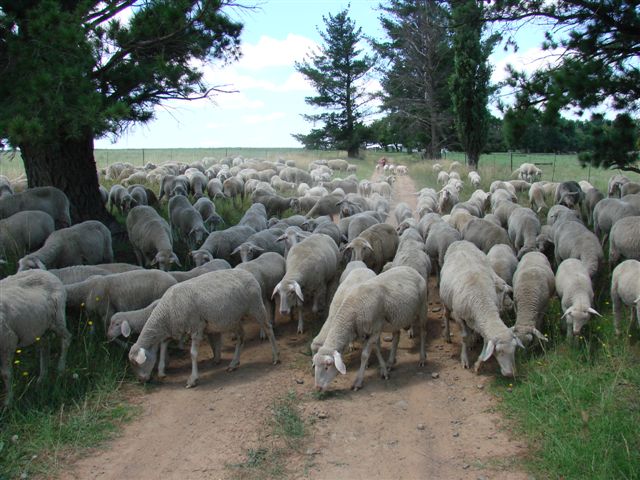Oorsprong ~ History
GESKIEDKUNDIGE OORSIG VAN DIE MERINO LANDSKAAP
Die Merino Landskaap het reeds sy ontstaan in die 13de en 14de eeu in Duitsland gehad. Met die invoer van Merino’s uit Spanje en die Ramboelie uit Frankryk in die 18de eeu is die dubbeldoel eienskappe van die ras vasgelê en is sedertien geteel vir die huidige geno- en fenotipiese eienskappe.
In sekere dele van Duitsland verteenwoordig die Merino Landskaap tot 90% van die skaapbevolking en oor 60% van die totale skaapbevolking van die land. Die ras het homself bewys in ‘n hele reeks lande sowel as in Suid-Afrika.
In 1956 is die eerste Merino Landskaap vanaf Duitsland ingevoer deur ‘n mnr C van der Merwe van Kroonstad. Die grootte van die diere het baie mense na hulle asems laat snak en ‘n hele reeks invoere het gevolg.
‘n Groep boere is so geïmponeer deur die aanpasbaarheid van die ras dat hulle dadelik 5 ramme en 50 ooie ingevoer het. Invoerpryse was as volg: DM 310 per ram en DM 72 per ooi. (1997 waarde = Ram – R863.27 Ooi – R200.51) Die groep boere was Mnre JL Rautenbach, HJ Geldenhuys en RL du Plessis.
In 1958 affilieer die Merino Landskaap by S A Stamboek en word as ‘n Genootskap gevestig. Die eerste sekretaris was mnr C van der Merwe van Kroonstad.
Nog invoere het gevolg en so het die Genootskap uitgebrei en al groter geword. In 1986 voel die Raad dat hul alle bande met die Merino wil verbreek en staan net bekend as die Landskaap Genootskap van S.A. tot die naam weer in 1990 terug verander is na die Merino Landskaap.
HISTORY OF THE MERINO LANDSHEEP BREED
The German Landsheep breed has existed since the 13th or 14th century in Germany. With the importation of Merinos from Spain and Rambouillet from France in the 18th century, the dual-purpose character of this breed was established. Since then, it has been purely bred in the breeds present geno- and phenotypic properties.
In certain parts of Germany the Merino Landsheep comprises as much as 90% of the total sheep population and more than 60% of the entire sheep population in that country. This breed has also proved itself in many other countries, including South Africa.
In 1956 a few progressive farmers in the Kroonstad area of the Free State imported the first Merino Landsheep animals into South Africa. They were Mr JL Rautenbach, Mr HF Geldenhuys and a Mr Dercksen. A total of six rams and 60 ewes were brought into the country at the time. The breed adapted exceptionally well to the climatic and pastoral conditions in South Africa, being prepared to search for food and to graze the available vegetation. The Merino Landsheep is equally at home in the poorest natural mid-mountain grazing region or the best agricultural areas where cultivated pastures abound in the semi-arid Karoo or the high rainfall areas. Merino Landsheep flocks are found scattered throughout the sheep-producing areas of the Mpumalanga, Gauteng, North-West and Free State provinces. They are also found, although to a lesser extent, in the Northern and Eastern Cape Provinces.
For a short period the Merino Landsheep were known only as the S A Landsheep, but this was changed in 1990 by an Annual General Meeting of the Society on recommendation of the President of the German Merino Landsheep Society.

